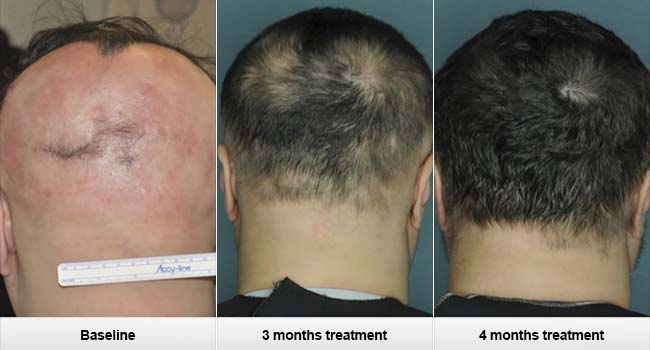In 2014, two major trends have become evident in the world of hair transplants:
- The realization of the inevitability of FUE hair transplants replacing FUT/strip hair transplants, with the latter slowly almost becoming extinct. Even in 2013, this was not yet entirely obvious. Strip hair transplants will remain a better option than FUE for a minority of patients, so will not entirely go out of fashion.
- Increasing adoption of the ARTAS robot system and the inevitable progress in automation of the hair extraction process in hair transplantation. In my opinion, it is also a certainty that hair recipient site creation and hair implantation in those recipient sites will both also see automation in the coming years.
However, if the gifted and highly creative Dr. Carlos Wesley has his way, his PiloFocus scarless hair transplant technique will make both FUE and ARTAS seem blasé and very yesterday, right when both are about to reach peak popularity!
The links in the below paragraphs will help you understand how PiloFocus works. The basic description of the technique is that it involves extraction of hair follicles from underneath the scalp, something that sounds very freaky, but is actually quite an extraordinary concept. Graft extraction is undertaken via a 1 cm incision in the donor area, through the use of Dr. Wesley’s proprietary Piloscope endoscopic tool. I find the fact that graft survival rates would be 5% – 40% higher with this technique than with FUE much more impressive than the scarless aspect of the technique, which in and of itself is revolutionary. The reason for this higher survival rate is that the grafts when extracted from underneath the scalp are chubbier and include more stem cells and protective tissue.
I have high respect for Dr. Wesley and therefore decided to write this post even before his technique receives FDA approval (expected in 2014). It seems like his invention does not get sufficient respect from most other hair transplant surgeons at present, reminding me of the skepticism that Dr. Woods and FUE were met with just over a decade ago.
My respect for Dr. Wesley derives from his impressive resume; his years of collaboration with Dr. Walter Unger, a pioneer in the hair transplant and hair loss research world; and his excellent high quality recent presentation on his technique (see Spencer Kobren’s interview with Dr. Wesley in full).
My decision to author this post was also easy after I read this fascinating Verge magazine article on Dr. Wesley and PiloFocus from July 2014.
The biggest disadvantage with the PiloFocus technique is that it seems far more difficult than FUE hair transplantation, especially when you consider that there is no way a robot such as ARTAS can perform the extractions. Consequently, it will require significant training of surgeons by Dr. Wesley, and I would guess that initial costs will be much higher than current average FUE costs. It also seems like there would be a much higher chance of infection with this procedure than with the FUE procedure, although I could be mistaken.
Even if PiloFocus does take off, by the time a decent number of surgeons become experts at it, hair cloning and/or hair multiplication might become a reality. It is too bad that a brilliant mind such as Dr. Wesley’s is utilized in the hair transplantation field rather than in the hair cloning or hair multiplication or hair loss prevention field.
Note: Dr. Wesley currently offers both FUE and FUT hair transplants, and once FDA approval is attained, he will offer PiloFocus.
